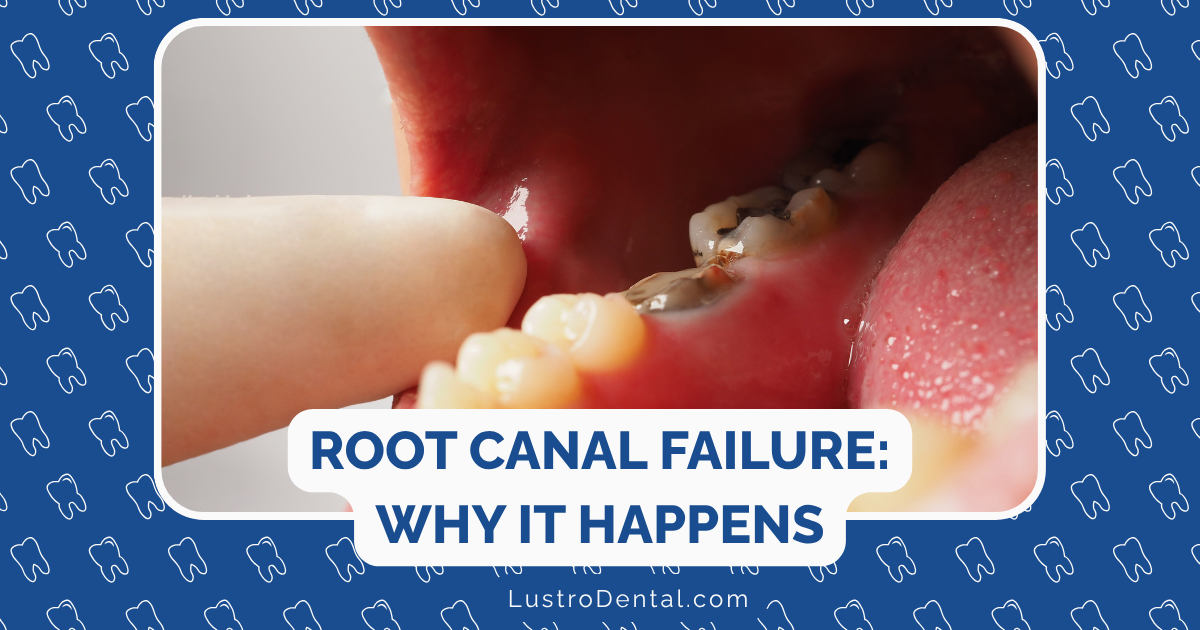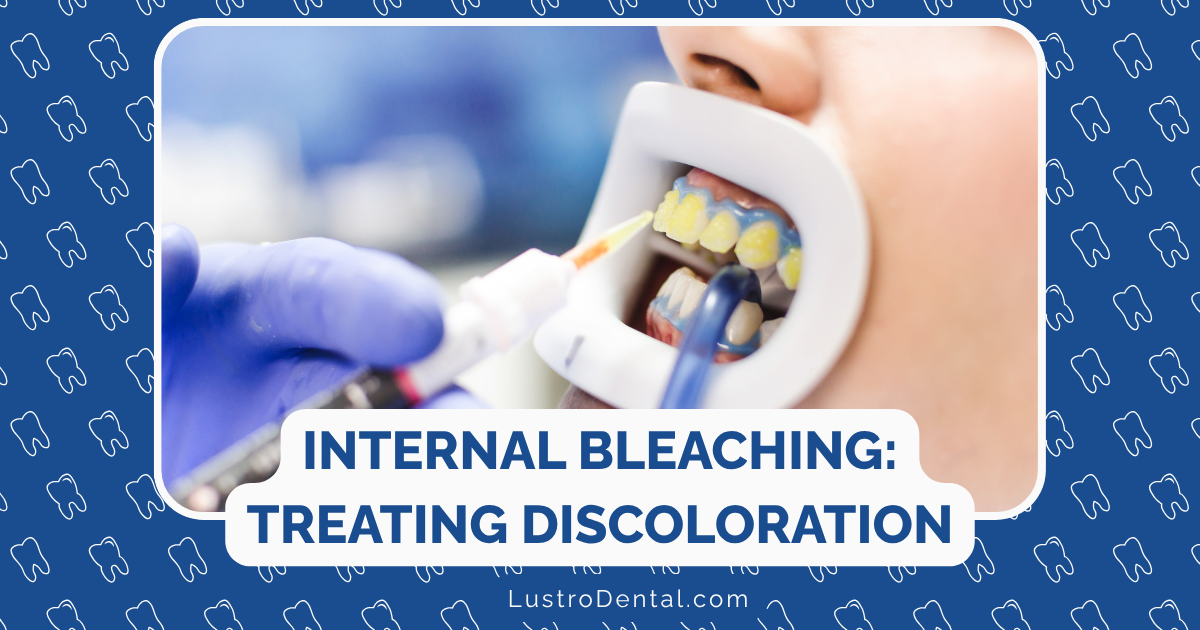When Root Canals Fail: Understanding Why and What Comes Next

Root canal therapy is one of dentistry’s most valuable procedures, saving millions of teeth each year that would otherwise require extraction. With success rates typically between 90-95%, the vast majority of root canals provide long-lasting relief and function. However, even with the best techniques and care, some root canals do fail—leaving patients confused, frustrated, and wondering what comes next.
As someone who’s guided many patients through this challenging situation, I understand the disappointment and anxiety that can accompany a failed root canal. In this article, I’ll explain why root canals sometimes fail, how to recognize the signs of failure, and most importantly, what treatment options are available to help you make informed decisions about your dental health.
What Constitutes a “Failed” Root Canal?
Before diving into causes and solutions, let’s clarify what we mean by a “failed” root canal. A root canal is considered unsuccessful when:
- Persistent infection remains or develops at the root tip (periapical area)
- Symptoms return or never fully resolve after treatment
- Radiographic evidence shows inadequate healing or new/enlarging lesions
- The tooth structure becomes compromised and non-restorable
Dr. Sarah Johnson, endodontist at Midtown Endodontist NYC, explains: “A successful root canal eliminates infection, resolves symptoms, and allows the tooth to function normally. When these outcomes aren’t achieved, we consider alternative approaches to address the underlying issues.”
Recognizing the Signs of Root Canal Failure
How do you know if your root canal has failed? Here are the most common symptoms to watch for:
Persistent or Recurring Pain
While some discomfort is normal for a few days after treatment, persistent or returning pain—especially pain that increases when biting or applying pressure—may indicate a problem.
Swelling or Pimple-Like Bump on the Gums
A small, pimple-like bump (called a fistula) near the treated tooth often indicates a chronic infection draining through the gums.
Tenderness When Touching the Tooth or Gums
Lingering sensitivity when pressing on the tooth or surrounding gum tissue can signal ongoing inflammation.
Discoloration of the Treated Tooth
While some darkening can occur naturally after root canal treatment, significant or progressive discoloration might suggest internal problems.
Tooth Mobility
A treated tooth that becomes loose may indicate infection affecting the supporting structures.
Diagnostic Confirmation: The Role of Imaging
When failure is suspected, dental imaging plays a crucial role in diagnosis. According to Murray Hill Endodontics, advanced imaging techniques provide valuable insights:
- Periapical X-rays can reveal persistent or new lesions around the root tip
- Cone Beam Computed Tomography (CBCT) offers three-dimensional views that can identify missed canals, fractures, or other issues not visible on traditional X-rays
A 2024 study in Nature emphasized that proper diagnosis is essential for determining the appropriate retreatment approach.
Why Do Root Canals Fail? The Common Culprits
Understanding why root canals fail helps in determining the most appropriate solution. Here are the most frequent causes:
1. Persistent Microbial Infection
The leading cause of failure is bacteria remaining in the canal system. This can occur due to:
- Missed canals: Some teeth have complex anatomy with extra canals that may be overlooked
- Inadequate cleaning: Portions of the canal system may be inaccessible or incompletely disinfected
- Resistant bacteria: Certain bacterial species, particularly Enterococcus faecalis, are notoriously difficult to eliminate
2. Procedural Complications
Technical aspects of the procedure can sometimes lead to failure:
- Inadequate filling: Canals that are underfilled leave space for bacterial recolonization
- Overextended filling material: Material extending beyond the root tip can cause inflammation
- Missed anatomy: Unusual root formations or accessory canals may be overlooked
- Instrument fracture: Broken instruments left in canals can prevent complete cleaning
3. Coronal Leakage
A systematic review published in 2024 identified coronal leakage as a major factor in root canal failure. This occurs when:
- Delayed restoration: Temporary fillings deteriorate, allowing bacterial recontamination
- Defective restorations: Poorly fitting crowns or fillings permit bacteria to re-enter the canal system
- Fractures: Cracks in the tooth structure create pathways for bacterial invasion
4. Structural Issues
The tooth itself may develop problems that compromise the root canal:
- Vertical root fractures: These are often difficult to detect and have a poor prognosis
- Resorption: Progressive loss of tooth structure can compromise the seal
- Inadequate ferrule: Insufficient remaining tooth structure reduces long-term success
5. Systemic Factors
Recent research has highlighted the impact of systemic conditions on endodontic outcomes:
- Diabetes: Associated with reduced healing rates and increased complications
- Immunocompromised states: May impair the body’s ability to eliminate residual infection
Treatment Options: What Comes Next?
When a root canal fails, several treatment options are available. The choice depends on the specific cause of failure, the restorability of the tooth, and patient preferences.
1. Nonsurgical Retreatment
Often the first choice for addressing failed root canals, retreatment involves:
- Removing the previous filling material
- Thoroughly cleaning and reshaping the canals
- Addressing previously missed anatomy
- Placing new filling material
Success Rates: According to a 2023 meta-analysis, nonsurgical retreatment has a success rate of:
- 87% under loose criteria after 1-3 years
- 77% under strict criteria after 4-5 years
Dr. Michael Chen, endodontic researcher, notes: “Retreatment is generally the most conservative option and should be considered first unless specific contraindications exist.”
2. Endodontic Microsurgery (Apicoectomy)
When retreatment isn’t possible or likely to succeed, microsurgical approaches offer an alternative:
- Accessing the root tip through the gum and bone
- Removing the infected root tip (3-4mm)
- Preparing and filling the root end
- Closing the surgical site to allow healing
Modern microsurgical techniques using specialized equipment have dramatically improved outcomes compared to traditional approaches.
Success Rates: A 2024 study in Nature reported:
- Over 90% success for modern apical microsurgery
- 97.6% healing rate after 1.5-5 years in one study
- Declining to 75.8% after 10-13 years
3. Extraction and Replacement
In some cases, saving the natural tooth may not be feasible or advisable:
- When the tooth is severely compromised structurally
- When retreatment and surgical options have failed
- When the cost-benefit analysis favors replacement
Replacement options include:
- Dental implant: A titanium post surgically placed in the jawbone with a crown attached
- Fixed bridge: Using adjacent teeth to support a replacement tooth
- Removable partial denture: A removable appliance replacing the missing tooth
Success Rates: An 8-year follow-up study comparing retreatment to extraction/implant found:
- 85.1% survival rate for endodontic retreatment
- 98.2% survival rate for extraction and implant
- Higher rates of serious complications (15%) in the retreatment group, primarily due to root fractures
Making the Right Choice: Factors to Consider
When deciding between retreatment, surgery, or extraction, several factors should be considered:
Tooth Restorability
- Remaining tooth structure: Teeth with less than 30% remaining structure have significantly higher failure rates after retreatment
- Ferrule effect: A minimum of 1.5-2mm of sound tooth structure above the gumline is needed for predictable restoration
Strategic Importance
- Position in the arch: Front teeth may warrant more aggressive preservation efforts for esthetic reasons
- Opposing teeth: The presence or absence of opposing teeth affects functional considerations
Patient Factors
- Medical history: Certain conditions may contraindicate surgical approaches
- Patient preferences: Some patients strongly prefer to save natural teeth, while others prefer the predictability of implants
- Financial considerations: Insurance coverage and out-of-pocket costs vary significantly between options
Prognosis Comparison
A balanced assessment should consider the long-term outlook for each option:
- Retreatment: Generally good prognosis (70-90% success) when the cause of failure can be identified and addressed
- Microsurgery: Excellent short-term success (>90%) with some decline over time
- Implants: Very high success rates (>95%) but still subject to complications like peri-implantitis
The Consultation Process: What to Expect
If you’re facing a failed root canal, here’s what typically happens during the consultation process:
- Comprehensive examination: Including testing, radiographs, and possibly CBCT imaging
- Diagnosis: Identifying the specific cause(s) of failure
- Treatment planning: Discussing viable options with their pros, cons, and costs
- Decision-making: Collaborating with your dentist to choose the most appropriate approach
Dr. Lisa Wong, endodontist, emphasizes: “The decision should be individualized based on the specific clinical situation, the patient’s overall dental health, and personal preferences. There’s rarely a one-size-fits-all solution.”
Preventing Root Canal Failure: Proactive Steps
While not all failures can be prevented, these steps can significantly reduce the risk:
- Prompt restoration: Complete the final restoration (filling or crown) as soon as possible after root canal therapy
- Choose specialists when appropriate: Complex cases may benefit from an endodontist’s specialized training
- Maintain good oral hygiene: Preventing new decay around treated teeth is essential
- Regular dental check-ups: Allow early detection of potential problems
- Address bruxism (teeth grinding): This can place excessive force on treated teeth
Conclusion: A Setback, Not the End of the Road
A failed root canal can be disappointing, but it’s important to remember that effective solutions exist. With modern techniques and materials, even teeth with previous unsuccessful treatment can often be saved and remain functional for many years.
The key is prompt recognition of the problem, accurate diagnosis of the cause, and selection of the most appropriate retreatment option. By working closely with your dental team and understanding your options, you can make informed decisions that support your long-term oral health.
Whether the best path forward is retreatment, microsurgery, or extraction and replacement, today’s advanced dental techniques offer excellent prospects for resolving the problem and restoring both function and comfort.
Have you experienced a failed root canal? Do you have questions about treatment options? Share your thoughts or concerns in the comments below, and we’ll address them in a future post!







